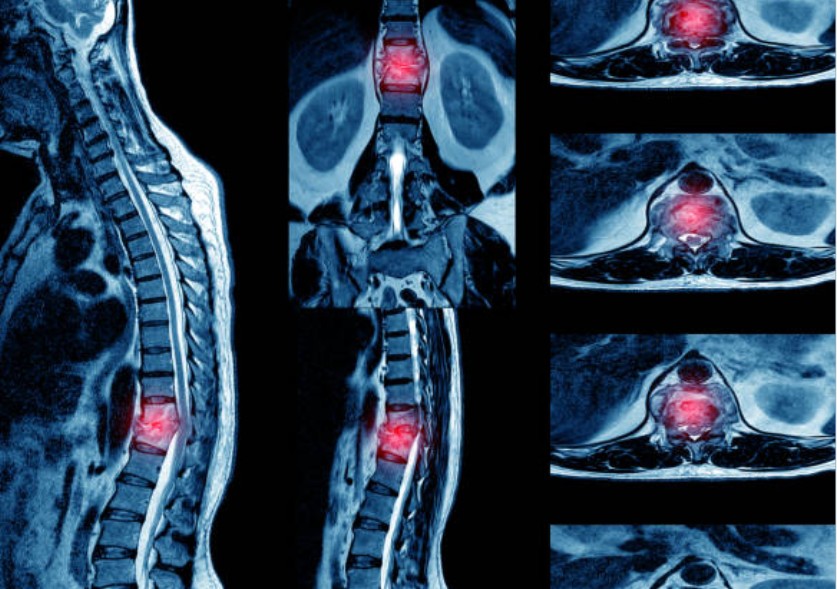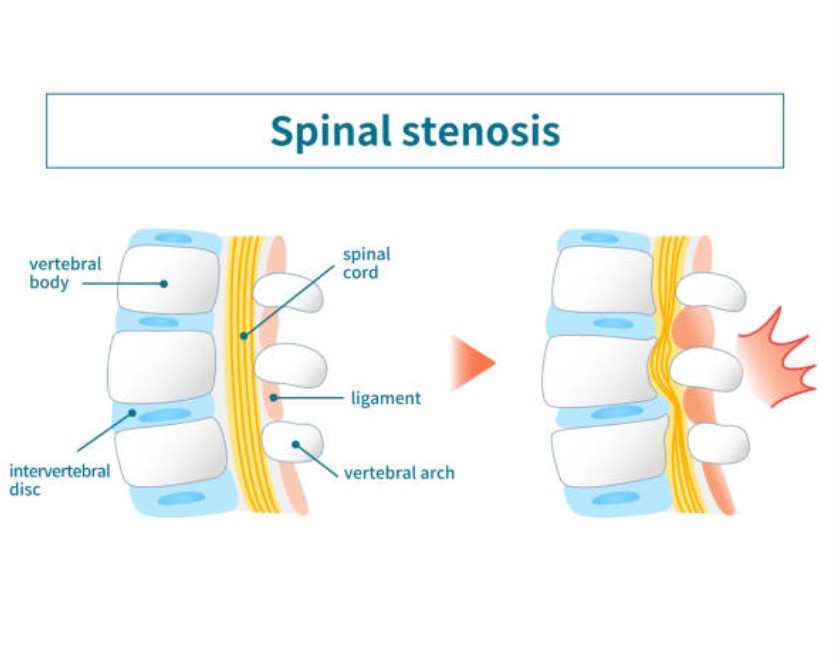The quest to answer “What Is the Newest Treatment for Spinal Stenosis?” has sparked widespread interest across the UK. This revolutionary breakthrough in spinal care is capturing the attention of patients, medical professionals, and healthcare policymakers alike. In this detailed blog post, we explore every facet of this development—from the innovative technology behind it to the potential benefits for patients and the future of spinal health in the UK.
What Is the Newest Treatment for Spinal Stenosis?
This keyword not only drives curiosity but also encapsulates the core of this article. In simple terms, the newest treatment combines state-of-the-art minimally invasive techniques with advanced regenerative therapies to deliver improved outcomes and faster recovery for patients suffering from spinal stenosis.
How Does the New Treatment Work?
The new treatment procedure is a blend of several cutting-edge technologies:
- Advanced Imaging Systems: Real-time imaging guides surgeons with pinpoint accuracy, ensuring that only the affected areas are targeted.
- Minimally Invasive Techniques: Utilizing tiny incisions to reduce tissue damage, resulting in less postoperative pain.
- Regenerative Medicine: Incorporating biologic agents to stimulate tissue repair and reduce inflammation, promoting quicker healing.
- Robotics and AI: Enhancing surgical precision through robotic-assisted procedures and artificial intelligence, leading to better patient outcomes.
How Is Spinal Stenosis Diagnosed and Evaluated?

What Steps Are Taken for Diagnosis?
The first step in addressing spinal stenosis is a thorough diagnosis:
- Comprehensive Imaging: MRI and CT scans provide detailed visuals of the spinal canal.
- Symptom Assessment: A careful evaluation of pain, numbness, and mobility restrictions.
- Personalised Consultations: Doctors create customised treatment plans based on the severity of the condition and the patient’s health history.
What Does the Procedure Involve?
Preoperative Planning
- Advanced 3D Imaging: Detailed mapping of the spinal region using state-of-the-art imaging technology to plan the surgical approach accurately.
- Risk Assessment: A thorough evaluation of potential risks and strategies to minimize complications during the procedure.
Precision Surgical Intervention
- Minimally Invasive Techniques: Utilizing image-guided tools and technologies, surgeons perform the procedure through small incisions, reducing tissue damage and recovery time.
- Real-Time Navigation: Continuous imaging support ensures precision in removing or reshaping the structures causing the stenosis.
Postoperative Care and Rehabilitation
- Intensive Monitoring: Immediate postoperative monitoring in a controlled environment to manage pain and detect any early complications.
- Rehabilitation Programs: Customized physical therapy and rehabilitation regimens designed to promote rapid recovery, restore mobility, and enhance overall function.
How Does Technology Drive This Breakthrough?
How Are Robotics and AI Changing Modern Surgery?

Recent advancements in robotics and AI have revolutionised surgical procedures:
- Increased Accuracy: Robots assist in making extremely precise movements during surgery.
- Real-Time Feedback: AI algorithms analyse surgical data instantly, allowing adjustments during the procedure.
- Reduced Recovery Time: With fewer errors and improved precision, patients benefit from shorter hospital stays and less postoperative discomfort.
Can Regenerative Medicine Really Heal from Within?
A standout feature of the new treatment is the incorporation of regenerative medicine:
- Biologic Agents: These substances help repair and regrow damaged tissues.
- Inflammation Reduction: Targeted therapies reduce swelling and accelerate healing.
- Enhanced Long-Term Outcomes: Patients experience not only immediate relief but also sustained improvements in mobility and quality of life.
How Is Patient Care Being Transformed?
What Are the Benefits of Personalised Treatment Plans?
UK clinics are leading the way by offering customised care:
- Multidisciplinary Teams: Combining the expertise of surgeons, physiotherapists, and pain specialists.
- Individualised Rehabilitation: Tailored physical therapy programs to match each patient’s recovery speed.
- Patient Education: Empowering patients with knowledge about their condition and treatment options.
How Does This New Treatment Compare to Traditional Methods?
Advantages of the New Treatment
- Accelerated Recovery:
Patients experience a significantly shorter recovery period, enabling them to resume daily activities and work sooner than with traditional methods. - Reduced Surgical Risk:
The minimally invasive approach minimizes tissue damage and lowers the likelihood of complications, leading to safer outcomes during and after the procedure. - Improved Patient Outcomes:
Enhanced pain relief and quicker healing contribute to a higher quality of life, resulting in greater overall patient satisfaction and well-being.
How Could This Treatment Change Your Life?
This question invites you to imagine a future where spinal stenosis is no longer a debilitating condition:
- Imagine Pain-Free Movement: With significantly reduced discomfort and enhanced mobility.
- Visualise a Faster Return to Daily Life: Shorter recovery times mean less time away from work and family.
- Consider Long-Term Health Benefits: A sustainable treatment that addresses the root cause, potentially reducing future complications.
What Does the Latest Data Show?
Below is a table that highlights the differences between various treatment options for spinal stenosis, with a focus on the newest breakthrough:
| Treatment Option | Success Rate | Recovery Time | Availability in the UK |
| Traditional Open Surgery | 70-80% | 6-12 months | Widely available across NHS trusts |
| Minimally Invasive Decompression | 75-85% | 3-6 months | Growing availability in the public & private sectors |
| Newest Treatment (Innovative Breakthrough) | 85-95% | 1-3 months | Pilot programmes in leading NHS trusts |
| Regenerative Medicine & Biologic Therapy | 80-90% | Variable | Emerging research stage |
What Does the Future Hold for Spinal Care?

How Will Ongoing Research Shape This Breakthrough?
The innovative treatment for spinal stenosis marks a transformative step in spinal care:
- Ongoing Research: Continued studies are expected to further refine the technique and expand its applications.
- Integration into NHS Protocols: As more evidence supports its effectiveness, the procedure is likely to be adopted more widely across UK healthcare facilities.
- Patient Empowerment: With a growing emphasis on personalised care, patients will have more treatment options tailored to their specific needs.
How Will This Impact the Healthcare System?
- Reduced Burden on Healthcare Facilities: Shorter hospital stays and lower complication rates can alleviate pressure on the NHS.
- Economic Benefits: Faster recoveries mean less time off work and reduced long-term healthcare costs.
- Enhanced Quality of Life: Patients can look forward to improved mobility and a better overall quality of life.
What Are Our Final Thoughts?
The evolution of treatment options for spinal stenosis is a beacon of hope for many in the UK. Answering the question “What Is the Newest Treatment for Spinal Stenosis?” opens up a world of possibilities—from advanced surgical techniques to revolutionary regenerative therapies. As clinical trials continue and the treatment becomes more widely available, it represents not just a breakthrough in medical science but a significant leap forward in patient care.
Stay informed with uknewsblog.co.uk for the latest updates on this and other groundbreaking health developments, ensuring you have access to the most current and comprehensive information available.
What Are the Frequently Asked Questions?
What distinguishes this new treatment from traditional methods?
The new approach integrates minimally invasive techniques with regenerative medicine, offering faster recovery, enhanced precision, and a lower risk of complications.
Is the treatment available across the UK?
Currently, the treatment is in pilot stages in select NHS trusts and specialised clinics, with plans for broader implementation as further research validates its effectiveness.
How quickly can patients expect to recover?
Early clinical data suggest that recovery times can be as short as 1-3 months, a significant improvement compared to traditional surgeries.
Are there any potential risks involved?
As with any medical procedure, there are risks, but the new treatment’s minimally invasive nature significantly reduces the likelihood of complications.






